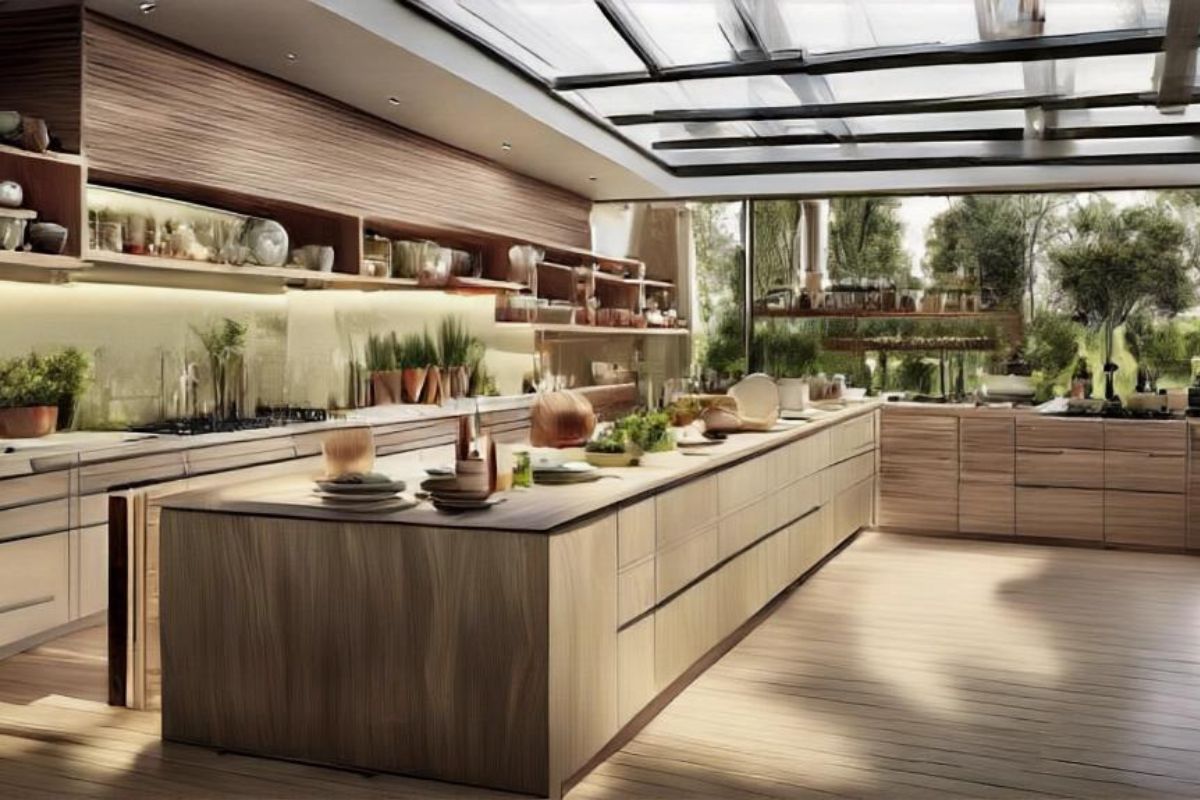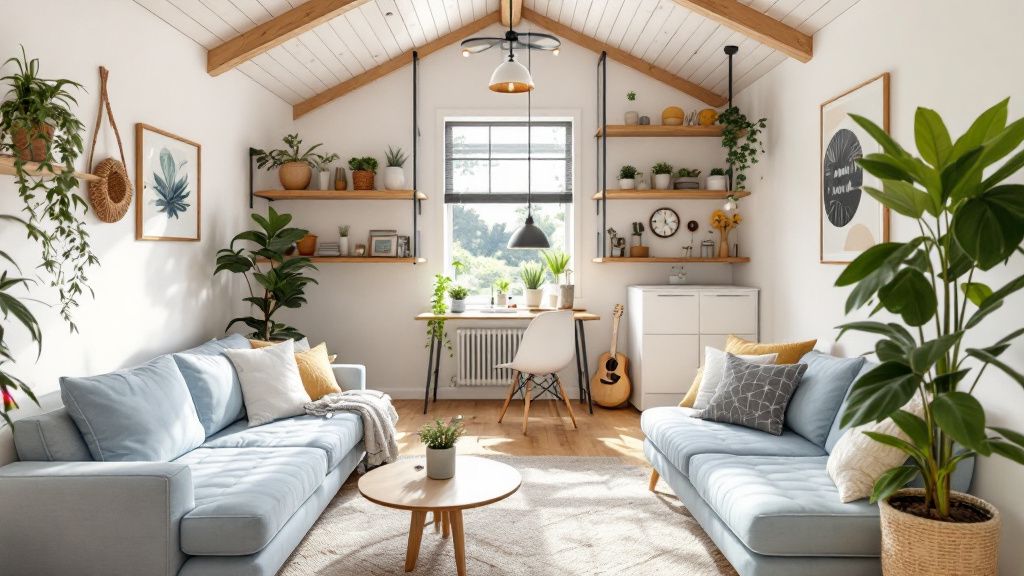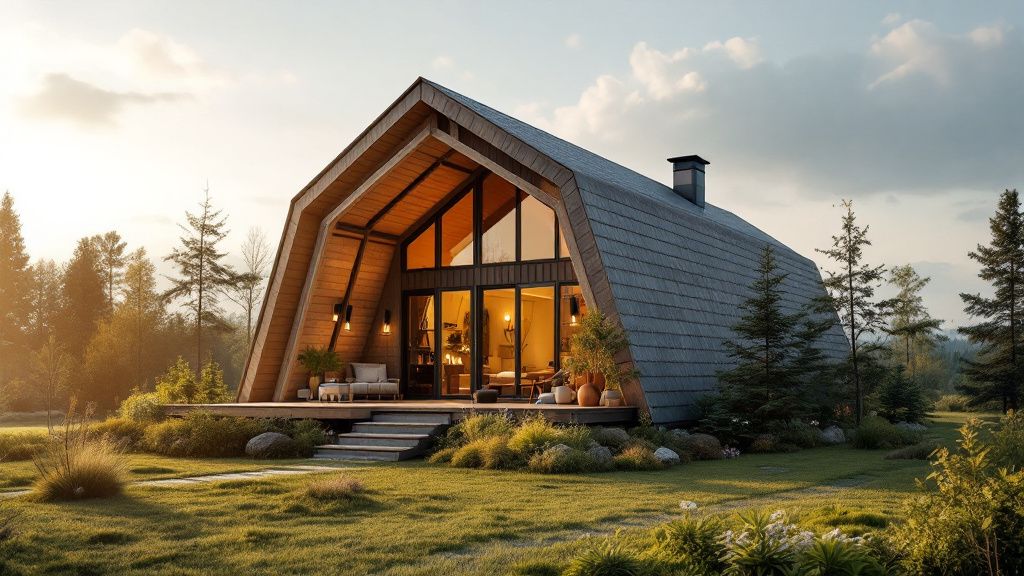It's also important to make sure that you maintain a comfortable working triangle between counters. But how can you tackle these challenges effectively? And what else might you need to take into account to make your L-shaped kitchen design a success? Stay tuned to find out.
Understanding L-Shaped Kitchen Basics
Let's explore the basics of L-shaped kitchens, a versatile design that maximizes efficiency and space utilization in your home.
This layout consists of two adjoining, perpendicular walls of cabinets that form a literal 'L' shape. It's an ideal choice if you're dealing with a small to medium-sized kitchen since it effectively uses corner space, which often goes to waste in other configurations.
The L-shaped kitchen works best for open-concept designs, as it delineates the kitchen from dining or living areas without fully segregating them. It also provides ample opportunity to add an island or a dining table, making it a practical option for modern homes.
One of the key benefits of this layout is the work triangle efficiency it provides. The work triangle refers to the efficient positioning of the sink, stove, and refrigerator, which are the three main functional areas in a kitchen.
In an L-shaped layout, you can easily achieve this efficient setup, reducing your movement while cooking and improving your overall experience.
Space and Layout Considerations
When planning your L-shaped kitchen, it's important to think about the space and layout to guarantee maximum utilization and functionality. A well-thought-out layout ensures easy access to various areas, effective storage, and comfortable cooking, cleaning, and dining.
To begin with, consider the size of your kitchen. This will determine the length of the L-shaped counter and the space you'll have for an island, if desired. Space between the counters should ideally be about 40-50 inches to allow for a comfortable working triangle.
Next, plan your storage wisely. Upper and lower cabinets should be strategically placed to accommodate your needs. Consider pull-out drawers for easy access to pots and pans, and tall cabinets for pantry items.
Don't forget about your dining area. If you have an open plan, you could use the shorter arm of the L for a breakfast bar or small dining table. Alternatively, you may choose to have a separate dining area.
Lastly, consider the flow of traffic. Your kitchen should allow for easy movement, especially between the stove, sink, and refrigerator. Ensure there are no obstructions, and that doors and drawers can open completely without hitting anything.
With careful planning, your L-shaped kitchen won't only look great, but also be highly functional.
Choosing the Right Appliances
After you've mapped out your space and layout, it's time to think about the appliances that will best suit your L-shaped kitchen. Choosing the right appliances is essential not only for functionality but also for maintaining the aesthetics and flow of your kitchen.
First, you need to take into account the size of your appliances. Large appliances might overpower your kitchen, while too small ones mightn't meet your needs. A standard size refrigerator, stove, and dishwasher are typically suitable for most L-shaped kitchens.
Second, think about the placement of your appliances. The fridge, stove, and sink should form a work triangle, providing efficiency while cooking. However, in an L-shaped kitchen, you'll need to position two of these on one wall and the other on the adjacent wall.
Third, consider the style of your appliances. Stainless steel appliances offer a sleek, modern look, while colored appliances can add a pop of personality.
Finally, don't forget about energy efficiency. Look for appliances with Energy Star ratings, which consume less power and help lower your utility bills.
Choosing the right appliances requires careful thought and consideration, but with these tips, you're on your way to creating a functional and stylish L-shaped kitchen.
.jpg)
Cabinetry and Storage Solutions
Moving on to cabinetry and storage solutions, it's essential to make smart use of every corner and crevice in your L-shaped kitchen. Think of your cabinetry as the backbone of your kitchen, providing both functionality and style. Opt for custom cabinets that fit the specific dimensions of your kitchen, maximizing storage and efficiency.
Consider pull-out drawers, lazy Susan's, or corner cabinets with swing-out shelves to make the most of the tricky corners. These solutions offer easy access to everything you need, preventing wasted space or forgotten items at the back of the cupboard.
Also, don't overlook the potential of wall cabinets that can reach up to the ceiling, offering valuable additional storage.
For a sleek look, you could opt for handleless cabinets, but remember, practicality should come first. Handles can actually aid accessibility, especially for higher shelves.
For your utensils, consider installing a pegboard on the wall, keeping everything within reach while freeing up drawer space.
Lighting and Finishing Touches
While the right cabinetry can create functional space in your L-shaped kitchen, it's just as important to take into account lighting and the finishing touches that can elevate your kitchen's overall style and ambience.
Lighting can make or break the functionality and mood of your space. Start by evaluating natural light sources and then supplement with artificial lighting where needed. For instance, you can install under-cabinet lights to illuminate your workspace or add pendant lights to highlight your island. Dimmers are also a great option, allowing you to control the brightness according to the time of day or activity.
As for the finishing touches, think about the details that can add character to your kitchen. Your choice of hardware, like knobs and pulls, can add a subtle flare. Backsplashes aren't just practical; they can also be a focal point, adding color and texture. And don't overlook the impact of your choice of paint color, which can dramatically alter the feel of the space.
Lastly, consider adding open shelving for displaying decorative items or cookbooks. These elements, when chosen thoughtfully, can make your kitchen not just functional, but also a place you love to spend time in.
Conclusion
In planning your L-shaped kitchen, prioritize functionality. Make sure your space accommodates ample counter length and a potential island.
Position your appliances to form an efficient work triangle. Opt for strategic cabinet placement, pull-out drawers, and tall cabinets for effective storage.
Lastly, select lighting and finishes that strike a balance between aesthetics and functionality. With careful planning, your L-shaped kitchen can be a practical and stylish heart of your home.






Share: